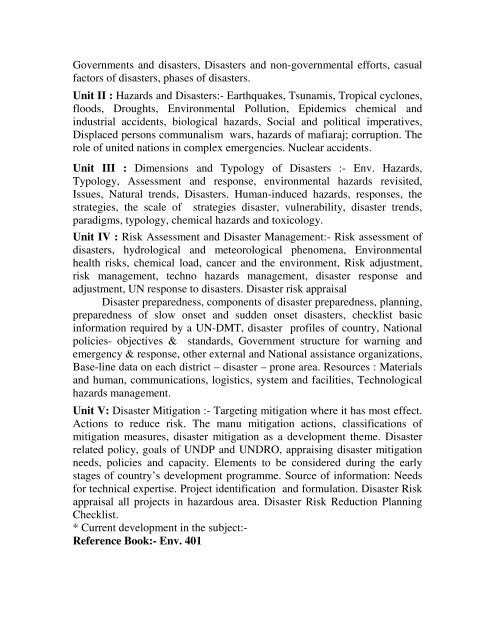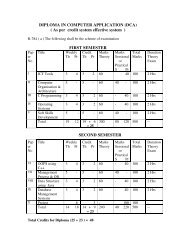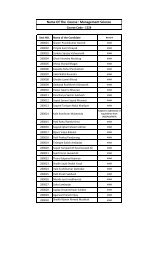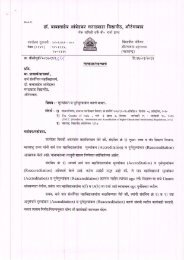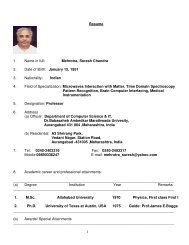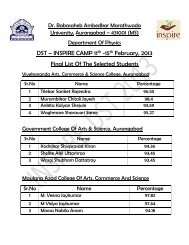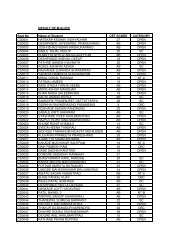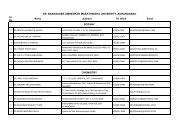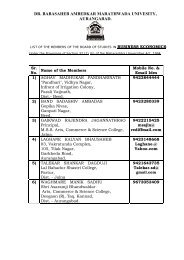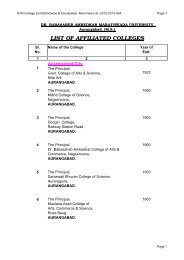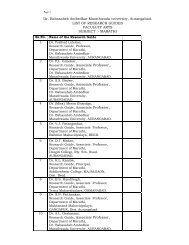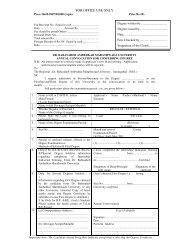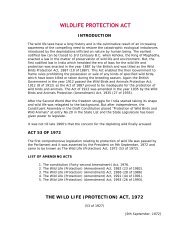Env.401: Concepts of Ecology & Biodiversity: -
Env.401: Concepts of Ecology & Biodiversity: -
Env.401: Concepts of Ecology & Biodiversity: -
Create successful ePaper yourself
Turn your PDF publications into a flip-book with our unique Google optimized e-Paper software.
Governments and disasters, Disasters and non-governmental efforts, casual<br />
factors <strong>of</strong> disasters, phases <strong>of</strong> disasters.<br />
Unit II : Hazards and Disasters:- Earthquakes, Tsunamis, Tropical cyclones,<br />
floods, Droughts, Environmental Pollution, Epidemics chemical and<br />
industrial accidents, biological hazards, Social and political imperatives,<br />
Displaced persons communalism wars, hazards <strong>of</strong> mafiaraj; corruption. The<br />
role <strong>of</strong> united nations in complex emergencies. Nuclear accidents.<br />
Unit III : Dimensions and Typology <strong>of</strong> Disasters :- Env. Hazards,<br />
Typology, Assessment and response, environmental hazards revisited,<br />
Issues, Natural trends, Disasters. Human-induced hazards, responses, the<br />
strategies, the scale <strong>of</strong> strategies disaster, vulnerability, disaster trends,<br />
paradigms, typology, chemical hazards and toxicology.<br />
Unit IV : Risk Assessment and Disaster Management:- Risk assessment <strong>of</strong><br />
disasters, hydrological and meteorological phenomena, Environmental<br />
health risks, chemical load, cancer and the environment, Risk adjustment,<br />
risk management, techno hazards management, disaster response and<br />
adjustment, UN response to disasters. Disaster risk appraisal<br />
Disaster preparedness, components <strong>of</strong> disaster preparedness, planning,<br />
preparedness <strong>of</strong> slow onset and sudden onset disasters, checklist basic<br />
information required by a UN-DMT, disaster pr<strong>of</strong>iles <strong>of</strong> country, National<br />
policies- objectives & standards, Government structure for warning and<br />
emergency & response, other external and National assistance organizations,<br />
Base-line data on each district – disaster – prone area. Resources : Materials<br />
and human, communications, logistics, system and facilities, Technological<br />
hazards management.<br />
Unit V: Disaster Mitigation :- Targeting mitigation where it has most effect.<br />
Actions to reduce risk. The manu mitigation actions, classifications <strong>of</strong><br />
mitigation measures, disaster mitigation as a development theme. Disaster<br />
related policy, goals <strong>of</strong> UNDP and UNDRO, appraising disaster mitigation<br />
needs, policies and capacity. Elements to be considered during the early<br />
stages <strong>of</strong> country’s development programme. Source <strong>of</strong> information: Needs<br />
for technical expertise. Project identification and formulation. Disaster Risk<br />
appraisal all projects in hazardous area. Disaster Risk Reduction Planning<br />
Checklist.<br />
* Current development in the subject:-<br />
Reference Book:- Env. 401


